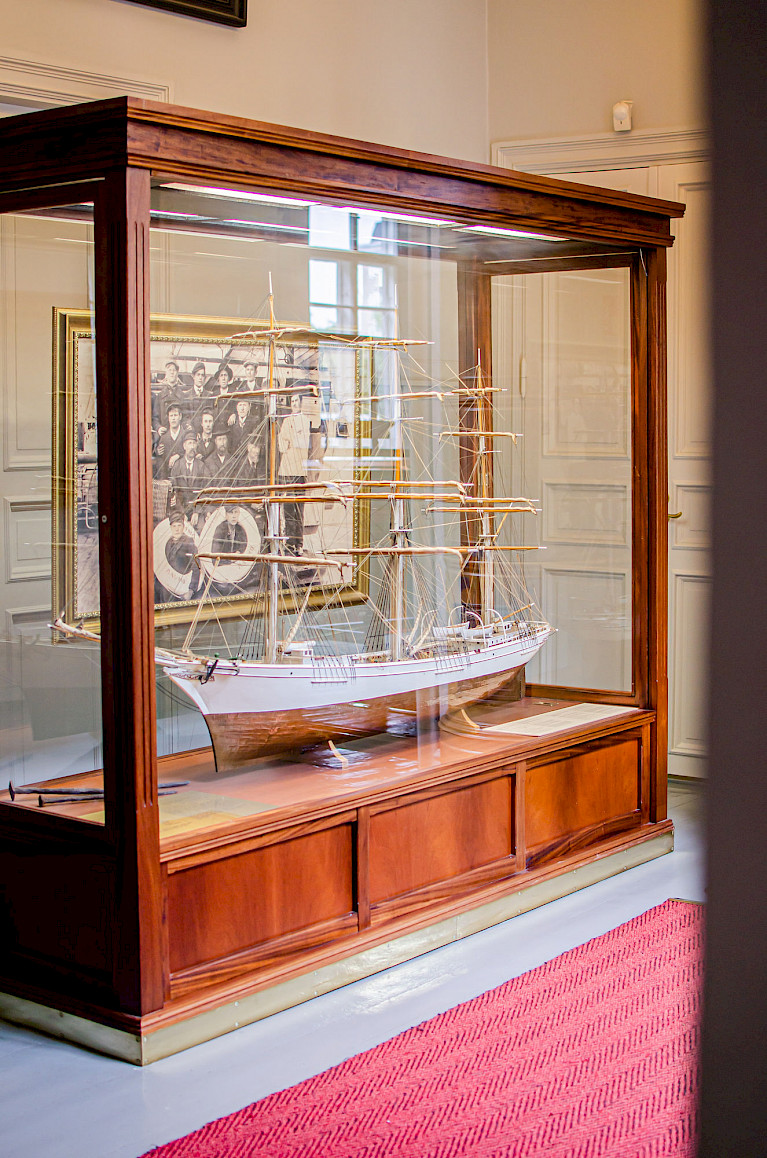
RMM139
Model of Fullrigger the Osmo
The Osmo was built for ocean traffic. Her first voyages already took the Osmo far: to Yemen, Burma and Ceylon, now Sri Lanka. Until the beginning of the 20th century, the Osmo sailed around the world, visiting all continents and only occasionally stopping in Finnish ports. The crew could be away from home for years at a time. This was the lot of many Finnish sailors. The yield in foreign tramp traffic was far higher than in import to and export from Finland.
The model shows Osmo as a new ship. She was originally rigged as fullrigger. She was re-rigged as barque in 1885; the model dates from before this change. If you compare the model with the painting to its left, you will see the difference: the mast in the back has different sails. Re-rigged as barque, the Osmo required a smaller crew, as the sails were less demanding to handle than in a fullrigger.
A tradesman and shipowner of Rauma, John Nurminen, purchased the Osmo. She started carrying timber from Finland to ports in Denmark, Germany and England. The Osmo was sold again in 1913, and she changed owners several times in a short time after that. In 1918, the Osmo was once again re-rigged as barquentine.
The Osmo survived exceptionally long for a wooden sailing ship. She made her last voyage in 1923, at the age of more than 50 years. Most wooden ships were dismantled after less than 20 years of sailing, if they were not shipwrecked before this.
There was a plan to make the Osmo a museum ship. A students’ association in the University of Helsinki bought her in 1929 with the intention of converting her into a museum. She was taken to Uusikaupunki shipyard for refurbishing. However, the shipyard was bankrupt. As if this was not enough, an autumn storm in 1937 broke the anchor chain and blew the Osmo to the shallows where she was stuck. In 1941, it was established that the Osmo was beyond repair, and a permit was given to dismantle her into firewood.
The Osmo never became a museum ship. Fortunately, this model was made and the figurehead was salvaged in the course of the museum project. You can see the figurehead on the wall to the left of the model.